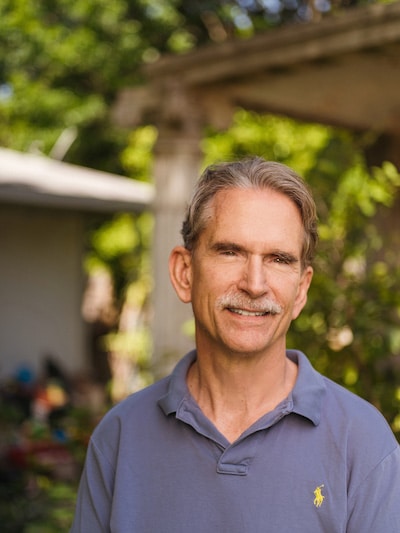Celebrating a Cure
|
John Lyons
John Lyons does not know how he got hepatitis C. Doctors told him he may have acquired the insidious blood-borne infection during his service in Vietnam or gotten it from a 12-pint blood transfusion following a car wreck in the late 1970s, long before the blood supply was screened for the virus. What John knows is that hep C lurked in his body for years, seriously damaging his liver.
“When doctors told me I had elevated liver enzymes, I had no idea what they were talking about,” John remembers.
Hep C did not even have a name until 1991. Before then, the virus was simply called non-A, non-B hepatitis. The stealthy virus often does not create symptoms for many people until decades later when it can result in cirrhosis of the liver or liver cancer, earning the disease the nickname “The Silent Killer.”
John’s disease was detected after surgery for another health issue. In 1997, a liver biopsy confirmed what his rising liver enzymes were telling doctors. He had hep C. The standard drug regimen was difficult – shots and pills and blood draws. John’s health started spiraling downward quickly.

“The original therapy was onerous,” John explains. “I was achy all the time like I had the flu.” The 6’3” San Antonian dropped from a weight of 215 down to 150 pounds. This strong Air Force veteran was a shadow of his former self.
For years, the pills and injections would take his virus load down to undetectable levels. “But,” John says, “I was about to go undetectable. I was weak as a pup,” he recalls. “I was deteriorating physically, emotionally and spiritually.” Doctors placed him on a liver transplant waiting list.
Believing he had nothing to lose, John volunteered for a free drug trial at the Texas Liver Institute in San Antonio in 2012. For 24 weeks, he took regular hep C medications and two “mystery drugs” as he called them. His liver enzymes went down and his viral load dropped from 2 million to 25 in a matter of weeks. “It was jaw dropping,” John recalls.
At the one-year mark, his doctor sent him an official letter declaring he was cured of the infectious disease that had threatened his life. Seven years later, John still has that letter. His name was removed from the transplant waiting list.
Scientists at Texas Biomed and nonhuman primates at the Southwest National Primate Research Center played a crucial role in late-stage testing of this new approach to treating hep C. A single pill a day for 3 months can wipe out this previously intractable health issue.
Around the world, an estimated 150 million people are chronically infected with hepatitis C and about 700,000 of them die each year from hep C-related liver diseases. Thanks to recent scientific breakthroughs, most patients can now be cured in a matter of a few weeks with these revolutionary new medications.
John is 70 years old now. With a new lease on life, he is pursuing higher education by earning a Master’s degree online through Texas A&M University. He hopes to teach undergraduates when he finishes. It is a future he dared not plan for just a few years ago. “It is mindboggling to be in the final stages of a terminal illness and then be cured,” John says. “I really think it is critical to our nation that we invest in the future of science for the next generation.”
100% of your donation goes to the TxBioMed Capital Campaign
Pilot Project
Science driven by you for you!
As America’s only independent, nonprofit research institute with a fully integrated primate research center and the highest level biosafety laboratories in the world on one campus, Texas Biomed aims to save lives as fast as possible.
Combining its regulated, ethically-run primate center and biosafety labs with the expertise of more than 75 scientists, the Institute is speeding up the development of vaccines and therapies for some of the world’s deadliest diseases.
With a vision to double the size of its workforce, recruit leading scientists in the field of infection and immunity and create a collaborative environment that advances discovery, Texas Biomed is transforming how innovations move from the lab to loved ones. Because, the goal is to eradicate infectious diseases, and give us all a healthier future!